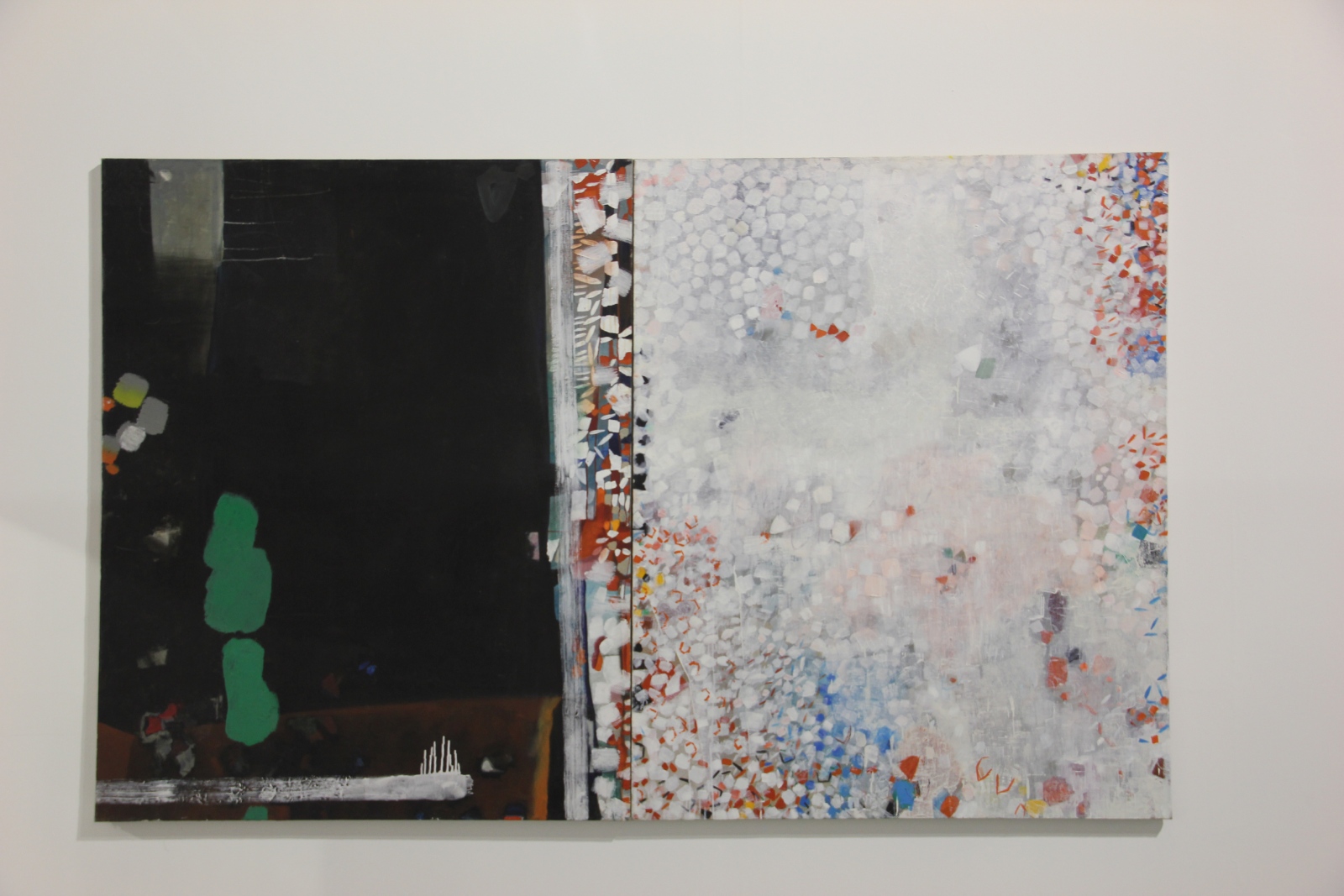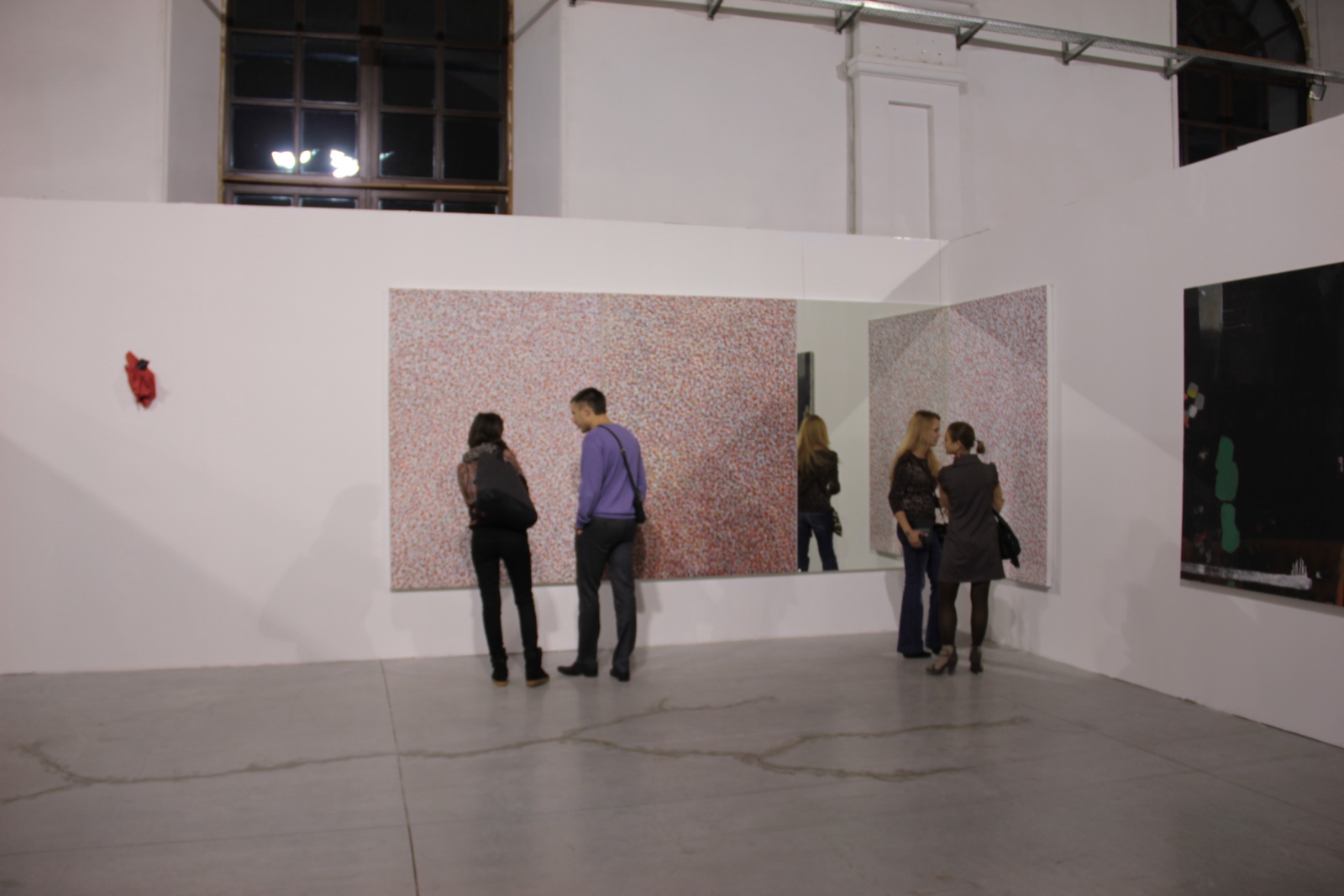"The dot is also the source of basic goodness, its fuse or starting point. Out of that primordial experience, we begin to realize basic goodness. To begin with, whenever there is a dot, it is unconditional. You can't say whether it is bad or good, but it is so". "That basic human quality of suddenly opening up is the best part of human instinct. You know what to do right away, on the spot - which is fantastic. That is what we call the dot, or basic goodness and unconditional instinct. When you have an instinct of the real instinct, you don't think: you just feel, on the spot"
― Chögyam Trungpa
This project was created in collaboration with a Ukrainian architect and designer Julia Biatova for the Art Kyiv Contemporary VII in 2012.
The title refers to one of the key concepts of Tibetan Buddhism, according to which every person is endowed from birth with an enlightened nature — basic goodness. Throughout life, all of us, consciously or not, experience fleeting moments when this nature suddenly shines through. It is precisely this moment, this spark, that is The Dot. It is not the result of intellectual effort or of an artistic gesture — it simply happens.
In this project, Svirely employs his characteristic exhibition approach, which could be described as the “syntax principle”. The artist plays with his paintings, dismantling his own triptychs and diptychs, breaking them down into separate words or syllables, and combining them with new canvases and mirrored planes. What matters are not only the paintings themselves, but also the spaces between them, the rhythm, the pauses, like it is in spoken language. Within the artist’s practice, this project marked the completion of his shift from thinking in terms of individual paintings to thinking in terms of exhibition space, where the artistic message is structured like a sentence, composed of word-paintings, each element carrying its own semantic weight.

"The Dot" (2003), oil on canvas, 120 x 100 cm.

"The Dot" (2003), oil on canvas, 120 x 100 cm and "Looking for Butterflies" (2003), Part I of the triptych, 130 x 85 cm. Parts II and III of the triptych were rejected by the artist, as they introduced an entirely different meaning into the exhibition.

"Spring. May." (2001), oil on canvas, 200 x 145 cm.
 The mirrors, together with the paintings, construct a portal into the reality "to the other side of the mirror".
The mirrors, together with the paintings, construct a portal into the reality "to the other side of the mirror".

As the project participants recount, when the exhibition was nearly completed, Temo was dissatisfied: something was missing. It was almost what he wanted to realize, but not quite. There was a sense of tension. Suddenly, he grabbed a red paper napkin that someone had left on the table nearby, crumpled it, and taped it to the wall — and the space opened up. That was The Dot. The happening remained unseen by the public but is of great importance.


"We wanted to create a sophisticated, illusory space that would invite viewers to play...When it comes to play, the act of play is devoid of any concept. Moreover, if a concept is present, play becomes impossible, because play is not an attempt to realize a predetermined plan, but rather an immersion into the very process of action as it unfolds. During play, thoughts are absent. We are inside the process itself, directly engaging with quality of that in which we are engaged. The one who plays perceives only the texture and movement of the present moment, instant by instant. And for me, as an artist, this experience is the greatest value, it is both the path and the goal.”
— Temo Svirely

